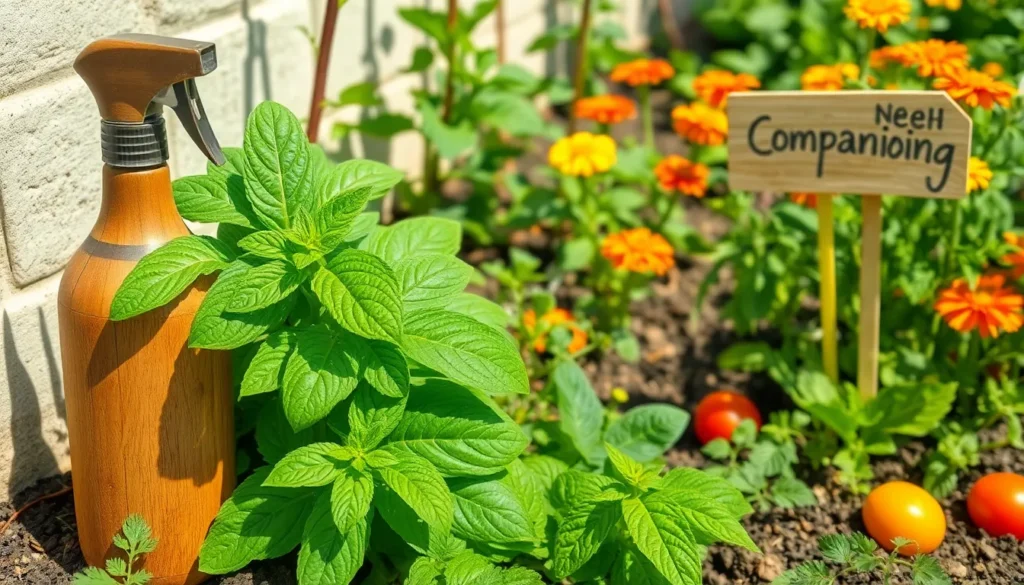In the vibrant world of gardening, a thriving ecosystem is both a gardener’s dream and a delicate balance to maintain. Whether you’re just beginning to dig your hands into the soil or you’ve been nurturing your plot for years, managing pests without harming the environment is a crucial skill that benefits both your garden and the planet. Eco-friendly pest control allows us to protect our cherished plants while fostering a healthy environment for beneficial insects and organisms. This approach not only promotes sustainability but also ensures that our gardening practices harmonize with nature’s intricate design.
In this article, we’ll delve into six common eco-friendly pest control strategies that are both effective and simple to implement. You’ll discover how to tackle those pesky intruders using methods that are kind to the earth, yet tough on unwelcome guests. From homemade remedies to savvy garden planning, these techniques offer practical solutions tailored to both novice and seasoned green thumbs. By the end of your read, you’ll be equipped with a toolkit of environmentally conscious strategies that promise healthier plants and a more vibrant garden.
Understanding Eco-Friendly Pest Control
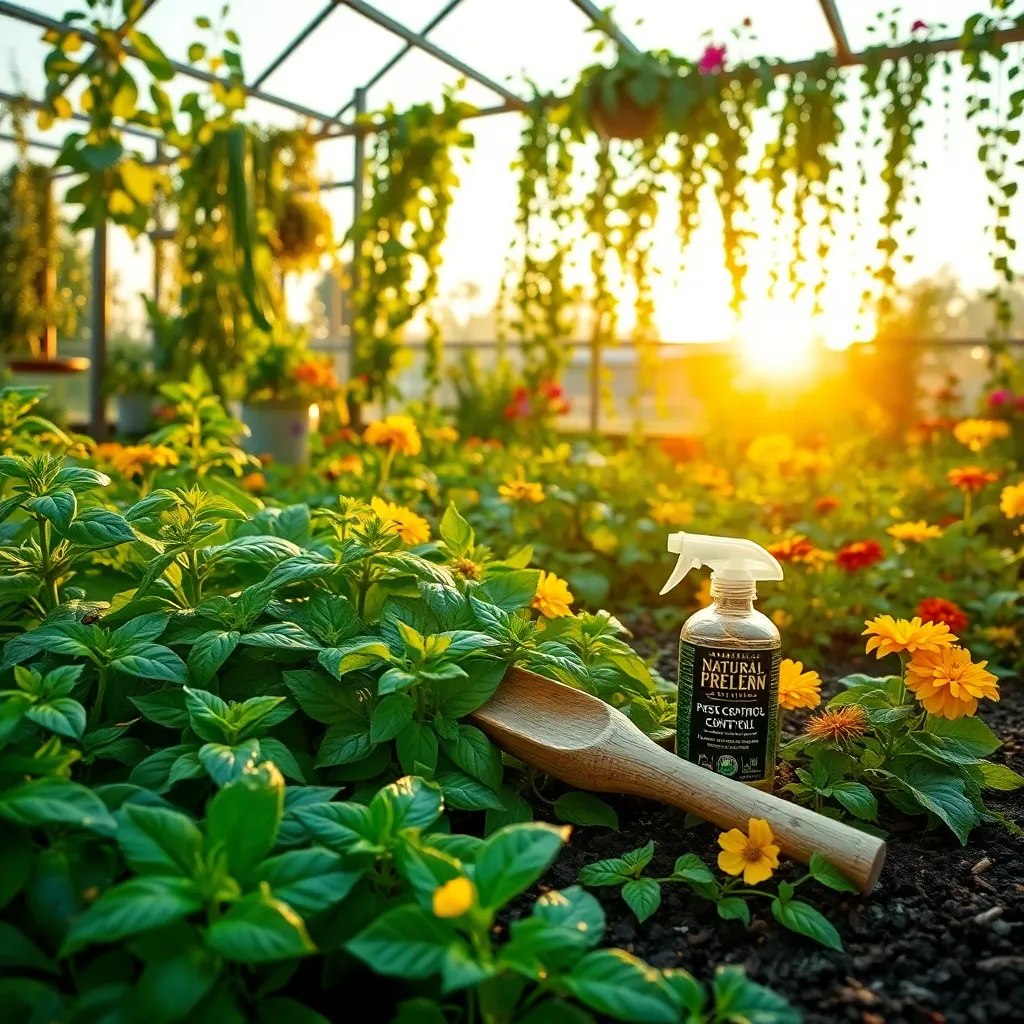
Eco-friendly pest control strategies focus on maintaining a healthy and balanced garden ecosystem. By using natural methods, you can protect your plants while minimizing harm to beneficial insects and the environment.
One effective approach is to attract natural predators, such as ladybugs and lacewings, which feed on common pests like aphids. Planting flowers like marigolds, dill, and fennel can encourage these beneficial insects to take up residence in your garden.
Companion planting is another practical method for reducing pest populations. For example, planting basil alongside tomatoes can repel tomato hornworms, while sunflowers can attract aphids away from your crops.
For those dealing with more persistent pests, using homemade sprays can be an eco-friendly solution. A mixture of water, mild soap, and neem oil can deter a wide range of insects without damaging your plants.
It’s important to apply these sprays during cooler parts of the day, such as early morning or late afternoon, to prevent leaf burn. Consistent, careful application will ensure that your plants remain healthy and your pest problems are kept under control.
Companion Planting for Pest Reduction
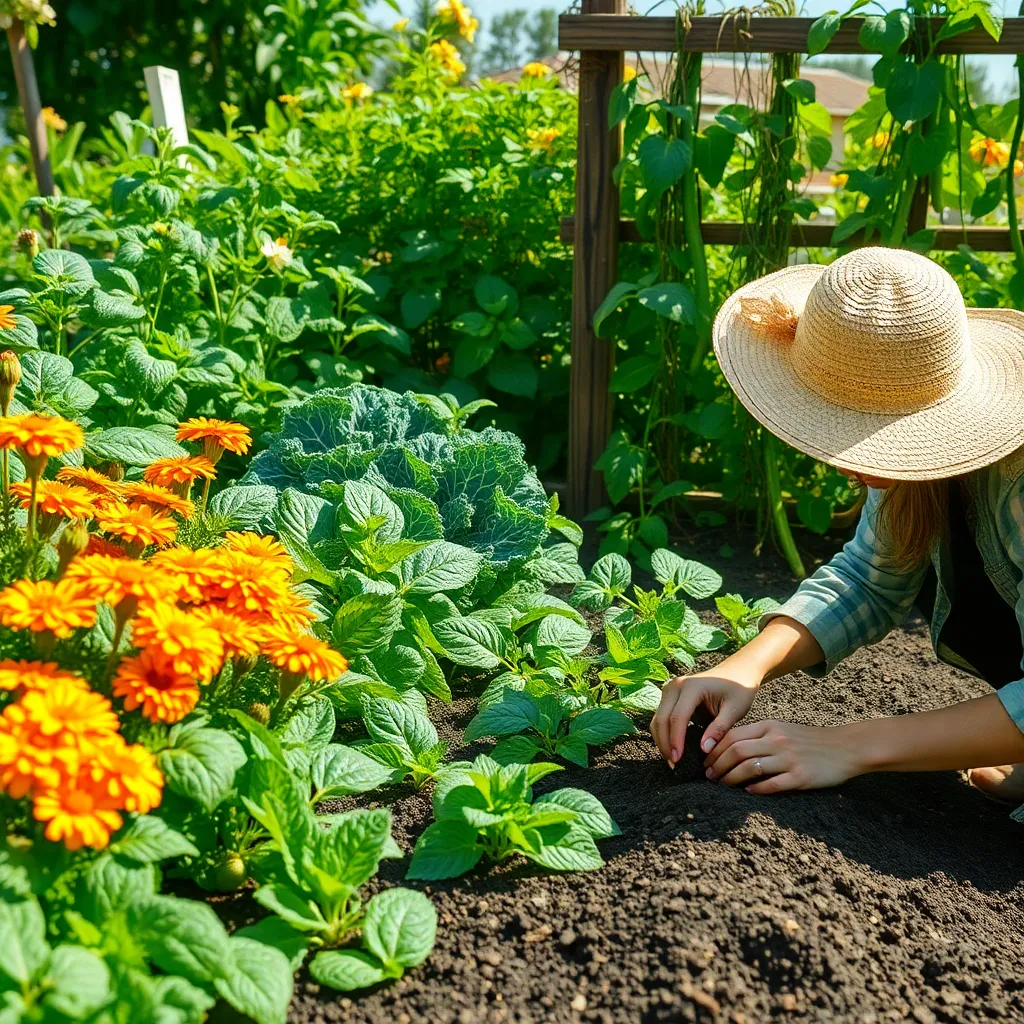
Companion planting is a natural and effective way to reduce pests in your garden by leveraging the benefits of plant partnerships. By planting certain species together, you can enhance their growth and deter unwanted insects without the need for harsh chemicals.
For example, planting marigolds alongside tomatoes can help repel nematodes, which can otherwise damage your tomato crop. Marigolds thrive in well-drained soil and should be watered regularly, making them an easy addition to most vegetable gardens.
Another beneficial pairing is basil with peppers, as basil can help deter aphids and other pests that commonly target pepper plants. Basil grows best in rich soil with plenty of sunlight and needs consistent moisture without waterlogging the roots.
Advanced gardeners might consider planting nasturtiums near cabbage plants to distract pests like cabbage worms. Nasturtiums are hardy and grow well in poor soil, making them a low-maintenance option that can thrive with minimal care once established.
Natural Predators: Your Garden Allies

Embracing natural predators in your garden can significantly reduce pest populations without chemicals. Ladybugs, for instance, are voracious consumers of aphids, making them an excellent ally for your vegetable beds.
Encourage beneficial insects by planting a variety of flowers that offer nectar and pollen. Plant species such as dill, fennel, and marigold are particularly effective at attracting predatory insects like lacewings and hoverflies.
For gardeners looking to control slugs and snails, welcoming toads and frogs into your garden can be highly beneficial. These amphibians thrive in moist, shaded areas, so providing a small, shallow water feature can serve as both a water source and an attractive habitat.
Experienced gardeners often introduce predatory insects such as parasitic wasps to target specific pests like caterpillars and whiteflies. You can purchase these beneficial insects online or from local garden centers, ensuring your pest control is both natural and sustainable.
Homemade Remedies for Pests
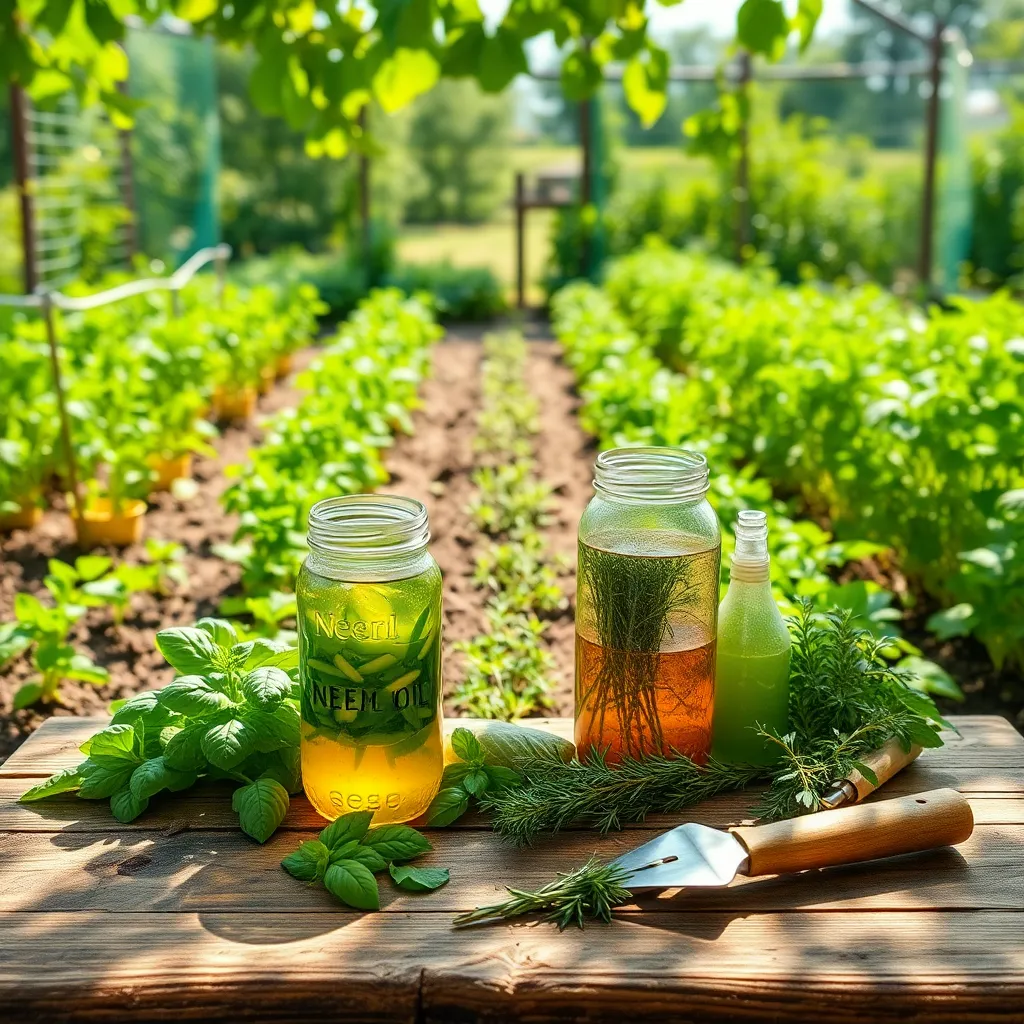
Homemade remedies for pests can be both effective and eco-friendly, allowing you to manage garden nuisances without harmful chemicals. Neem oil is a popular choice; simply mix one teaspoon of neem oil with a quart of water and a few drops of dish soap, then spray it on affected plants to disrupt pest lifecycles.
For a versatile pest control solution, consider using garlic spray. Crush a few cloves of garlic and steep them in hot water overnight; strain the mixture and spray it on plants to repel insects like aphids and whiteflies.
Another handy remedy is a soap spray, which is particularly effective against soft-bodied insects such as spider mites and mealybugs. Mix one tablespoon of liquid dish soap with a quart of water, ensuring even coverage on both sides of the leaves to suffocate pests.
Enhance your garden’s defenses by making a hot pepper spray. Blend a tablespoon of cayenne pepper with a quart of water and a drop of dish soap; this mixture deters pests with its spicy kick, but remember to rinse your produce before consumption.
Using Organic Insecticides Safely
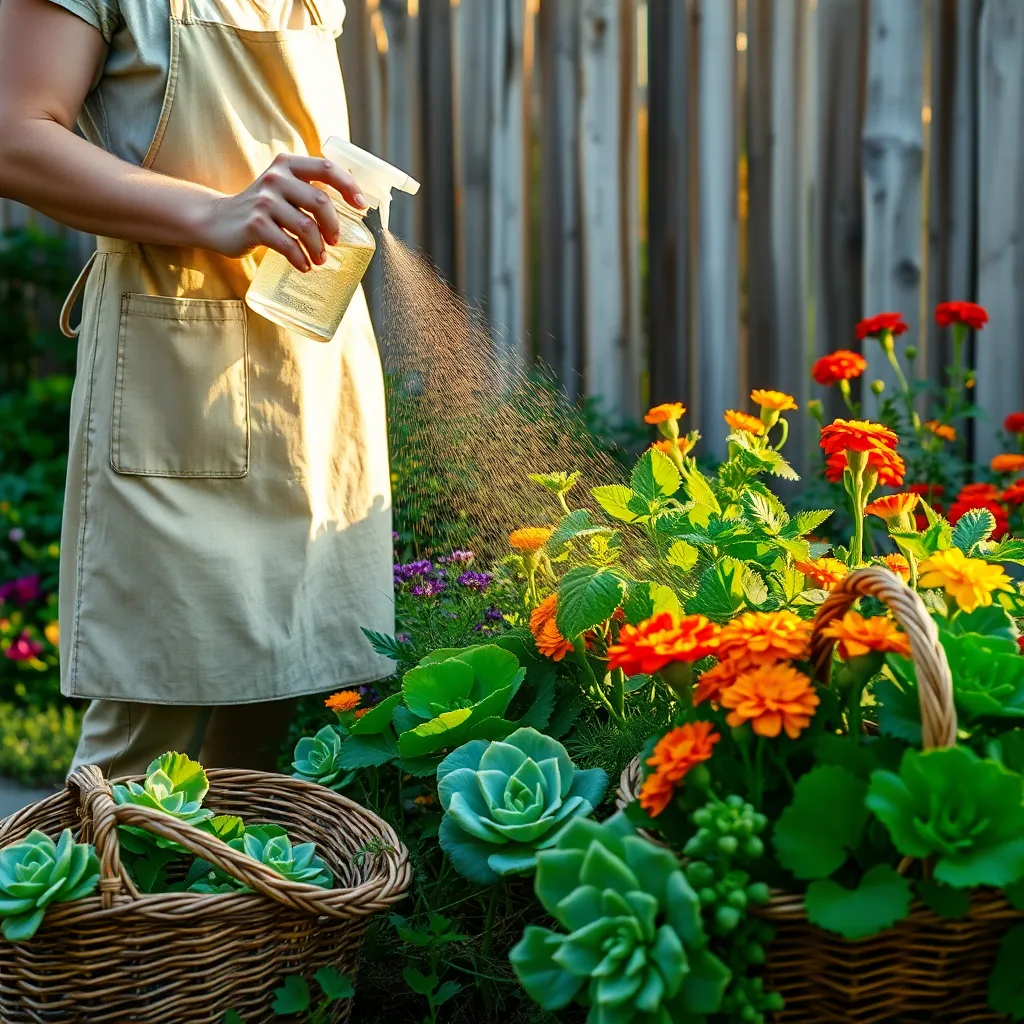
Organic insecticides can be an effective part of your eco-friendly pest control strategy. When using these products, it’s important to read and follow the label instructions carefully to ensure they are applied safely and effectively.
Consider using insecticidal soap, which is a popular choice among organic gardeners. This type of insecticide can be safely used on a variety of plants, but it’s essential to apply it during cooler parts of the day to avoid leaf burn.
Neem oil is another excellent organic option that disrupts the life cycle of pests. For best results, mix neem oil with water and a few drops of mild dish soap to help it adhere to plant surfaces.
It’s crucial to apply organic insecticides consistently for them to be most effective. Typically, this means reapplying every 7 to 10 days, especially after rain, to maintain their protective barrier.
Monitoring and Maintenance Strategies
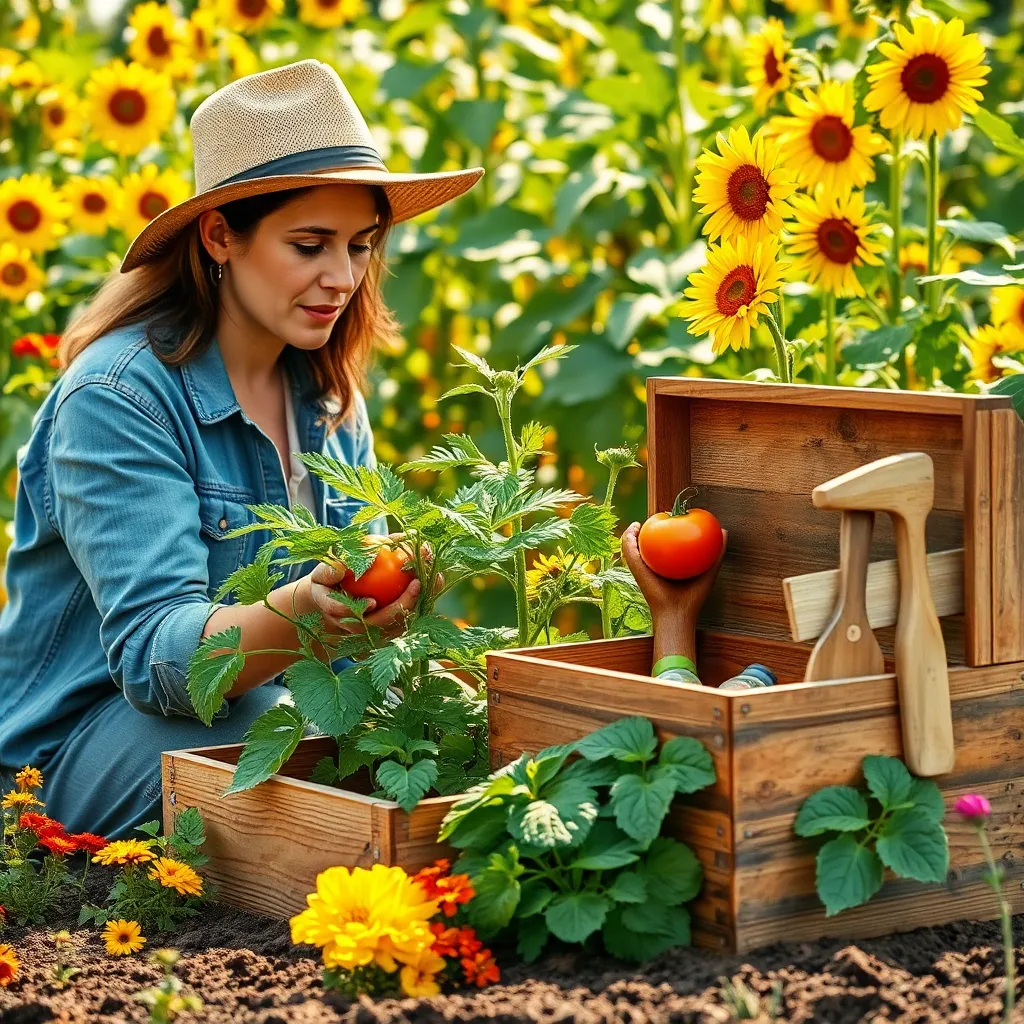
Monitoring your garden regularly is crucial for early pest detection and management. By inspecting plants weekly, you can identify potential issues before they become significant problems, allowing for timely interventions.
Pay attention to the undersides of leaves, as this is where pests often hide and lay eggs. Armed with a magnifying glass, you can detect even the smallest invaders and take action accordingly.
Keeping a gardening journal can be an effective way to track pest activity and plant health over time. Documenting observations helps you notice patterns and refine your pest control strategies year after year.
Utilizing natural predators is a sustainable way to maintain pest balance in your garden. To attract beneficial insects like ladybugs and lacewings, plant a variety of flowering plants such as dill and cosmos.
Maintaining plant health is your first line of defense against pests; healthy plants are more resilient to infestations. Ensure your plants receive the necessary nutrients by using compost or organic fertilizers, and water them deeply but infrequently to encourage strong root systems.
Conclusion: Growing Success with These Plants
In navigating the landscape of eco-friendly pest control, we’ve uncovered six pivotal strategies to enhance your household’s harmony: embracing natural repellents, introducing beneficial insects, maintaining cleanliness, sealing entry points, employing traps responsibly, and leveraging plants with pest-repelling properties. These methods not only safeguard your environment but also echo the core principles of nurturing a healthy relationship—care, attention, and mindful protection.
As a next step, consider conducting a home audit to identify areas where these eco-friendly practices can be integrated, fostering a pest-free space that mirrors the nurturing environment of a thriving relationship.
Bookmark this article to have a handy guide for whenever you need to reinforce your home’s defenses naturally. As you implement these strategies, remember that cultivating an environment—whether in your home or relationship—that values sustainability and care is a journey. By taking these steps, you’re investing in a future where both your home and your relationships can flourish harmoniously. Together, let’s build a world where every relationship is as vibrant and resilient as the ecosystem we strive to protect.

